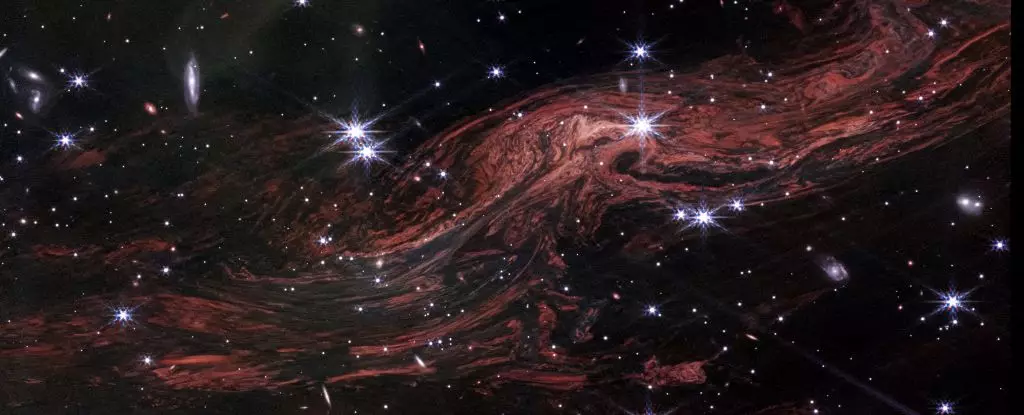In a groundbreaking revelation of cosmic phenomena, the James Webb Space Telescope (JWST) has captured stunning images of the interstellar medium surrounding the supernova remnant known as Cassiopeia A. This research not only raises fundamental questions about the structure and behavior of the universe but also demonstrates the remarkable capabilities of the JWST in unveiling previously hidden details within our galaxy. These newly acquired images present a significant leap in our understanding of the intricate whorls and striations of dust that exist between the stars.
The cosmic ballet of light and dust has unveiled a newfound appreciation for the complexity of the interstellar medium, especially as it relates to the aftermath of stellar explosions. The explosion of Cassiopeia A approximately 11,000 light-years away is a case in point. When this star exploded in the 1670s, its emitted light traversed vast cosmic distances, illuminating the dust clouds in its path. The result of this interaction is a faint red glow that has only recently been rendered observable due to the advanced capabilities of the JWST.
This celestial phenomenon, referred to as a light echo, is akin to how sound echoes off surfaces. When the light from the explosion encounters dense regions of dust, it reflects back, reaching observers at different times. The JWST has facilitated unprecedented visibility into these light echoes, allowing astronomers to map the interstellar medium with remarkable precision, revealing intricate structures that were previously concealed in the dimness of space.
Astronomers have long speculated about the architecture of interstellar dust, yet until the JWST’s recent observations, direct evidence eluded them. The telescope’s capabilities are particularly adept at capturing infrared wavelengths, which means that it can visualize faint red light emitted from distant cosmic phenomena. During its observations, the JWST revealed layers of dense, dusty structures resembling the rings of an onion, with each layer contributing to a greater understanding of what lies beyond our observable universe.
Interestingly, the telescope captured changes in the dust’s structure within days, showcasing the dynamic nature of these regions. Astronomer Josh Peek remarked on the implications of this discovery, stating that the dense, dusty regions we now see are likely representative of many similar structures throughout the cosmos. With JWST’s cutting-edge imaging technology, researchers are positioned to explore cosmic dust like never before.
One of the most astonishing elements of the JWST’s findings is the understanding that interstellar dust is not merely random debris floating in space. Instead, it may be conventionally arranged in sheets with whorls akin to the grain in wood. This revelation may suggest a connection to the magnetic fields that permeate interstellar space, providing new avenues for researchers to explore magnetized turbulence and its effects on the formation and evolution of the galaxy.
The University of California’s Jacob Jencson expressed his astonishment at the level of detail the JWST provided, comparing it with previous observations from the now-retired Spitzer Space Telescope. This new knowledge paves the way for further investigation into the relationship between dust structure and magnetic fields, propelling our understanding of cosmic dynamics forward.
The results garnered from the JWST’s observations have far-reaching consequences for the field of astronomy. Armin Rest, also from the Space Telescope Science Institute, likened the three-dimensional imaging capabilities of JWST to a CT scan in medical imaging, highlighting how this innovative approach could revolutionize our grasp of the interstellar medium. By offering “slices” taken at different times, astronomers can analyze a true 3D representation of the dust cloud’s anatomy, forever transforming methodologies in the study of cosmic elements.
As scientists embark on deeper analyses of this data, exciting discoveries are anticipated. The recent presentations at the American Astronomical Society meeting signal an era of renewed interest and exploration in the fields of astrophysics and cosmology. As we continue to decode the mysteries of the universe, the JWST stands at the forefront, offering humankind an unprecedented view into the celestial enigmas that surround us, allowing us to unlock the secrets of the universe’s past, present, and future.



Leave a Reply